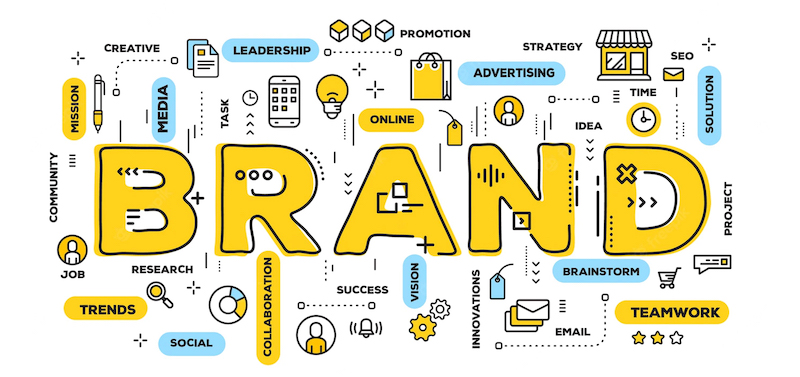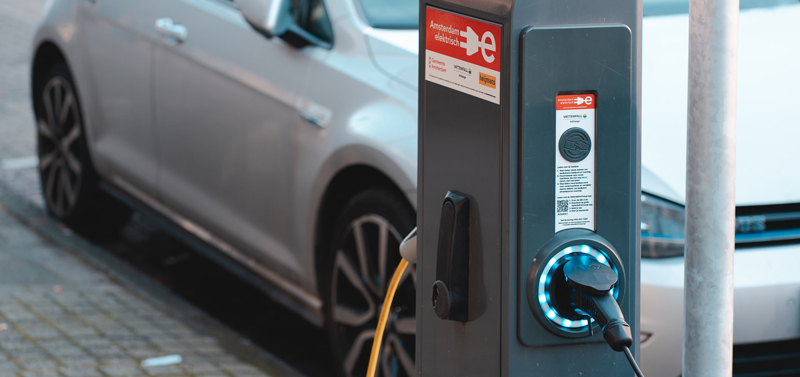January 10, 2023 3:29AM
10 Commonly Used Terms in Branding

When it comes to branding there are a variety of terms used to describe different elements and features. Whether you are a seasoned branding professional or starting out your journey in building a brand, here is our list of the most 10 most commonly used terms in branding.
Brand Awareness
This refers to how familiar consumers are with a particular brand and its products or services. The ultimate goal of branding is it achieve high brand awareness as this often leads to increased customer loyalty and higher sales. There are a variety of ways that businesses can try to increase brand awareness, including marketing, advertising, public relations, and social media.
It is essential for businesses to carefully manage their brand image and consistently deliver high-quality products or services in order to maintain and achieve strong brand awareness.
Brand Trust
The confidence that customers have in a particular brand or company is often referred to as Brand trust. This usually takes time to build and requires consistent and transparent branding, good quality products or services, and good customer service. Brands that are trusted by their followers and customers have a greater chance of being successful and growing a loyal customer base. There are a variety of ways that businesses can work to build trust with their customers, including being open about their business practices, responding fast and efficiently to customer inquiries and complaints, and consistently delivering high-quality products or services.
Brand Recognition
How well your brand is recognized by consumers is known as Brand recognition. This is a measure of how familiar the market is with a particular brand and how easily they can identify it. Brands which are easily recognised are more likely to be successful as consumers will already have these brands in mind when deciding on making a purchase or using a service.
A great example of this is the ride-hailing service Uber which has become so recognisable to consumers in many parts of the world that it is nearly always the first brand that comes to mind when consumers need a taxi.
Achieving high brand recognition in today's competitive market is not an easy task and requires businesses to have a strong brand identity which includes elements such as a unique logo, colour scheme, and brand messaging.
Brand Extension
Also commonly known as brand stretching, the term Brand extension, refers to the practice of using an established brand's name, logo, or other recognised brand elements to launch a new product or service in a different category.
For example, a company that is known for its Ladies' fashion might decide to launch a line of bags or accessories under the same brand name.
The main goal of brand extension is to leverage the positive associations and equity that the original brand has built up with its customers to help the new product or service succeed. However, if the new product or service is not aligned with the values or image of the original brand, it can damage the brand's reputation and lead to a loss of customer trust.
Brand Discovery
The process of finding new brands or products which meet a particular need or desire is known as "Brand Discovery". This often involves researching different brands, trying out new products, and looking for recommendations from relatives, friends, or reviews.
Brand discovery is often an ongoing long-term process, as consumers may be constantly seeking out new brands to try or new products that fit their changing needs and preferences.
By increasing their visibility, brands can work to make their products more discoverable. Advertising, social media and other marketing efforts are a great way to achieve this and will also ensure the brand resonates well with its target audience.
Brand Loyalty
This refers to the dedication a consumer has to continue purchasing a particular brand's products or services over time, even when faced with the option to purchase a competitor's product or in changing market conditions.
Consumers who show loyalty to a brand are more likely to make repeat purchases, recommend the brand to others, and be willing to pay a premium price for the brand's products.
Businesses can focus on building and maintaining brand loyalty by consistently delivering good quality products or services, offering good customer service, and creating a strong emotional connection with their customers through effective branding and marketing.
Brand Identity
The term Brand identity refers to the visual elements of a brand. These include colour scheme, font, design, logo and brand messaging. It can also include a company's values, mission and personality.
A strong brand identity makes a company stand out in the marketplace and build a connection with its customers. It is important for businesses to consider and develop a brand identity, as it plays a key role in how consumers perceive and remember the brand.
Brand Character
The personality and values that a company projects to its customers through its branding and marketing efforts are known in the industry as "Brand Character"
The brand character of a business should be aligned with its target audience and the products or services it offers.
For example, a brand that sells High-end furniture gear might have a luxurious and sophisticated brand character. While a brand that sells fitness products might have a more cool and aggressive brand character.
Brand Positioning
This term refers to the way in which a brand is perceived by consumers in relation to its competitors. It includes the unique value proposition that a brand offers to its target audience and the benefits and attributes that set it apart from other brands in the market.
A company's brand positioning plays an important part in the overall marketing strategy as it helps the brand stand out in the market and also attract the right customers.
Brand Experience
Brand experience refers to the feelings and lasting impression customers have of a brand. This includes thoughts, feelings, perceptions and reactions.
This includes customers' reactions and feelings to a wide range of marketing efforts including advertising campaigns, product launches, email marketing and many more.
As much as businesses try to create a positive brand experience during launches and campaigns, it's important to remember that consistency is the key. Creating a positive brand experience is key to building long-lasting relationships with customers as well as customer loyalty.
Are you a business in the process of building or strengthening your brand? Check out our latest branding guide for the year ahead - How To Build a Strong Brand 2023
Vodus can help you measure and improve your Brand Equity with our Brand Health Tracker, Customer Satisfaction Research and Product Innovation Research solutions. We will survey your target consumers to measure your brand performance, consumer perception and customer satisfaction to diagnose the underlying issues with your brand and construct a strategy to improve your Brand Strength.













